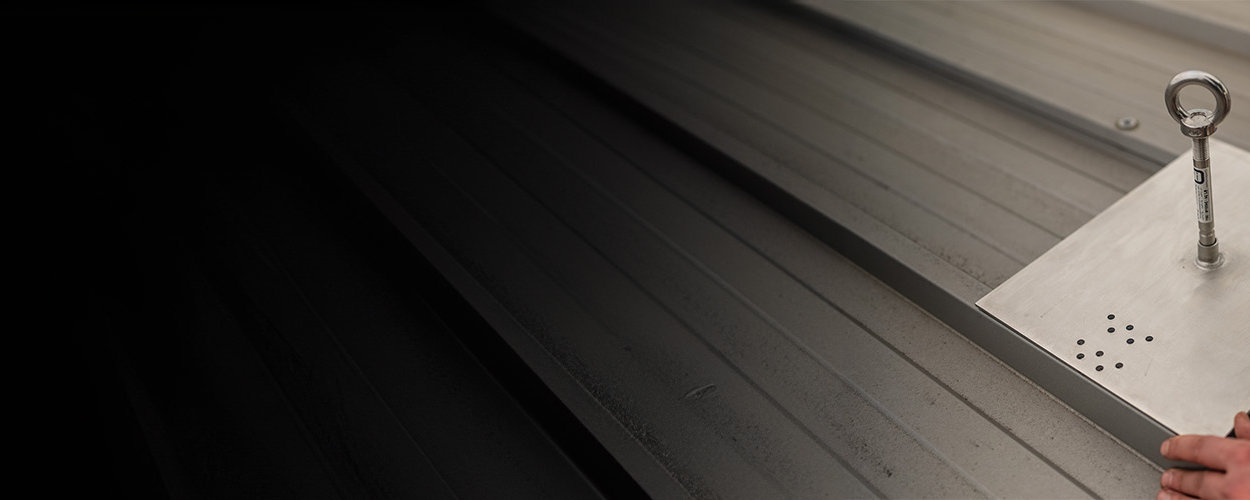What does the term ‘lanyard’ describe?
The function of a lanyard is easy to describe: The user uses the lanyard to rope himself with his personal protective equipment to the anchorage device in order to keep away from the edge of the fall or to be protected from impact in the event of a fall. As lanyards must also be able to withstand the enormous forces that occur when catching a falling person, they must be very hard-wearing and robust. Kernmantle ropes, wire ropes or lanyards made of synthetic fibres such as webbing are often used for this purpose. Lanyards usually have loops or carabiners / snap hooks at both ends so that the harness and anchorage device can be easily attached.
The most common combination here is the package comprising a fall arrest and retaining harness, lanyard (with integrated shock absorber) and lifeline system / single anchor point.
Adjustable lanyards
In order to be as universally usable as possible, it is advisable to use lanyards with an adjustable length. This reduces the risk of slack rope formation. Furthermore, the possible fall distance can be reduced, which has a direct influence on the risk of injury. In addition, a customised restraint system can be created by selecting a suitable length with the adjustable lanyard.
The length of lanyards with an integrated energy absorber or energy-absorbing properties must not be changed, as they are already ready for use.
DIN standards and variants of fasteners
Lanyards are available in several variants that are suitable for different tasks. To ensure the safety of the different variants, different DIN standards must be met for different applications.
In addition to DIN EN 354, which makes no further specification, there are also the following DIN standards:
Fasteners according to DIN EN 358
In contrast to lanyards to DIN EN 354, lanyards to DIN EN 358 are not suitable for fall arresters. They are only used for restraining or work positioning. Lanyards in accordance with DIN EN 358 can also be adjustable in length.
Guided type fall arresters including movable guide in accordance with DIN EN 353
Guided type fall arresters are tested in accordance with DIN EN 353. The fall arrester runs freely on a flexible guide, which has a safety catch at the end. This prevents the fall arrester from sliding beyond the end of the guide. The fall arrester locks in the event of a jerky movement. This means that a fall would be arrested immediately. The travelling fall arresters are also available with an integrated energy absorber. This further reduces the forces acting on the person falling.
Energy absorber according to DIN EN 355
Energy absorbers are tested in accordance with DIN EN 355. Energy absorbers are available as tear-open energy absorbers and friction energy absorbers. The latter are not suitable for use in wet or dirty environments, as the shock-absorbing effect is realised via friction. In the case of tear-open energy absorbers (strap energy absorbers), the energy generated is used for tearing open. This means that the function of tear-open energy absorbers is not impaired even in wet and dirty conditions.
Retractable type fall arresters according to DIN EN 360
Fall arresters are also tested. A retractable type fall arrester contains a lanyard that works in a similar way to a car seat belt. During smooth, normal movements, you can move freely; only when there is an abrupt movement does a braking system block and stop a fall.
A good description of the individual lanyards, including a graphic illustration, can be found in DGUV Rule 112-198 ‘Use of personal protective equipment against falls from a height’.
